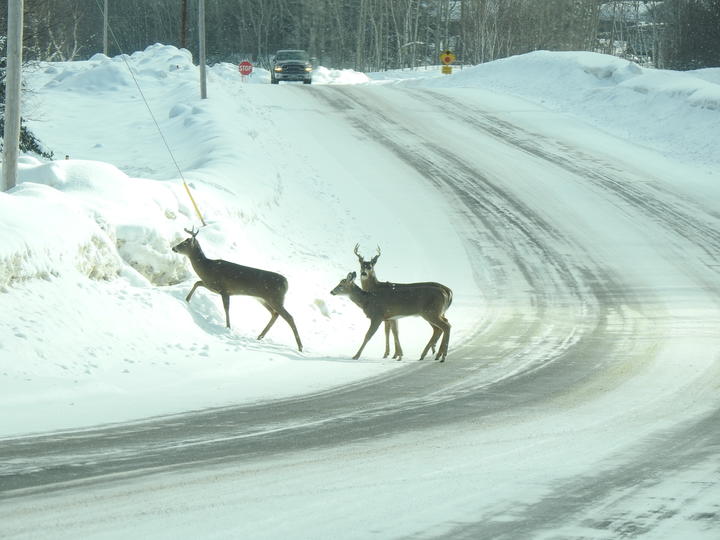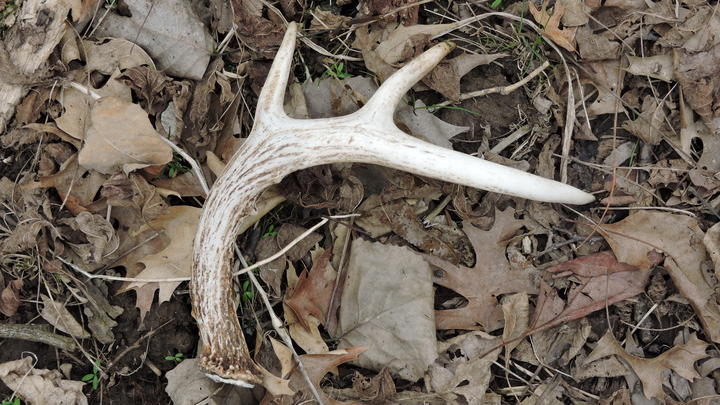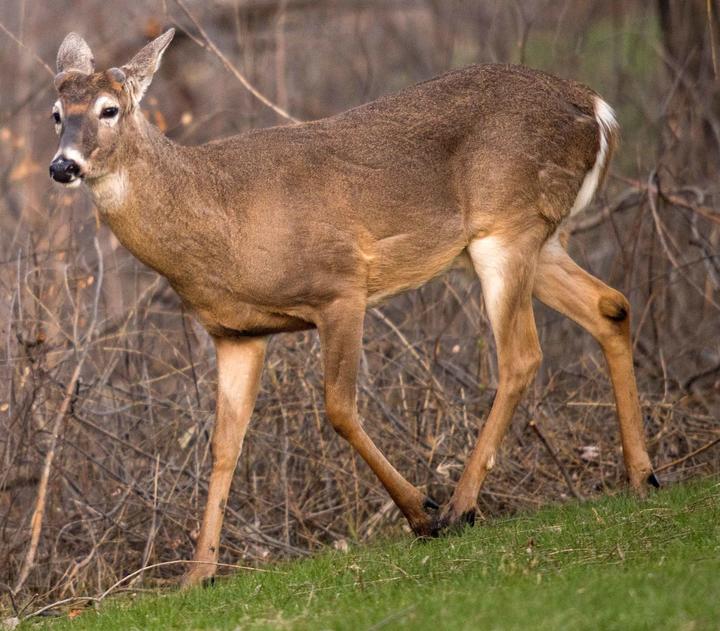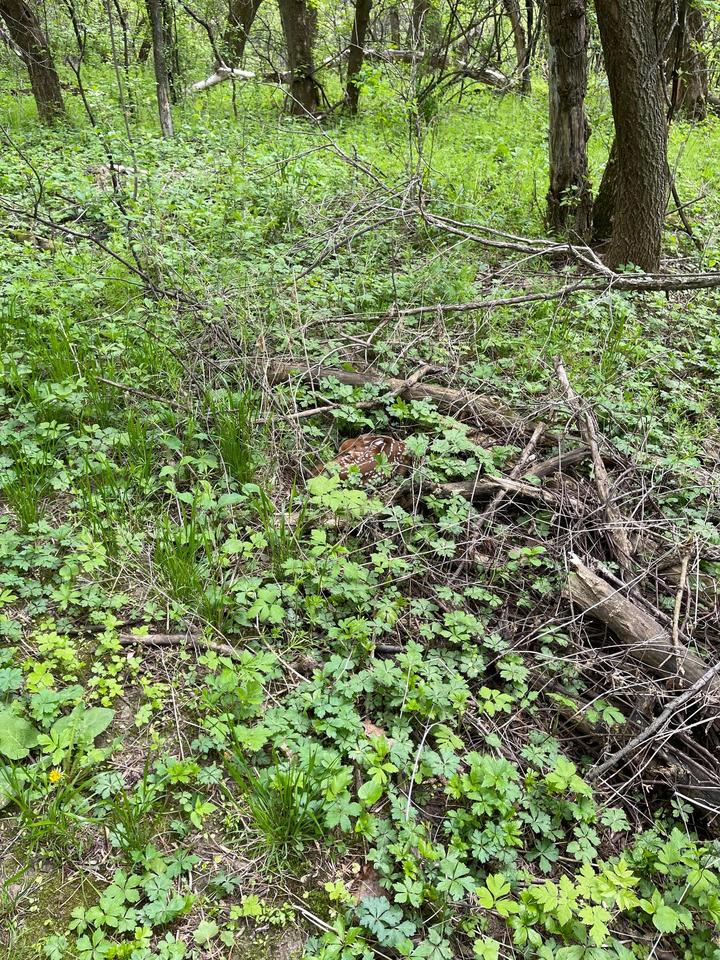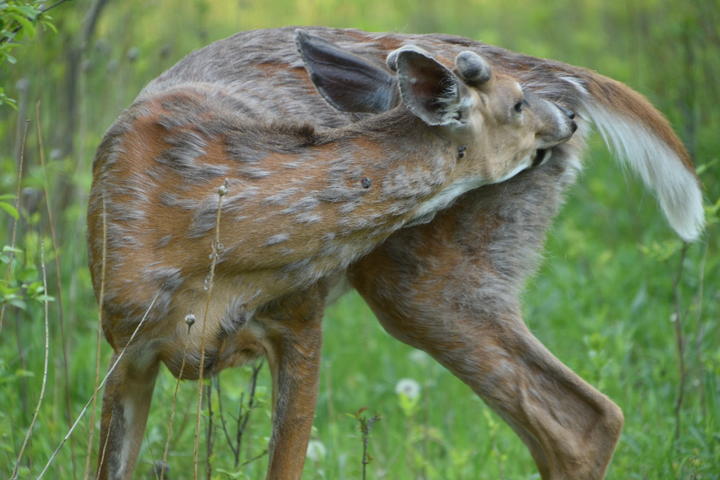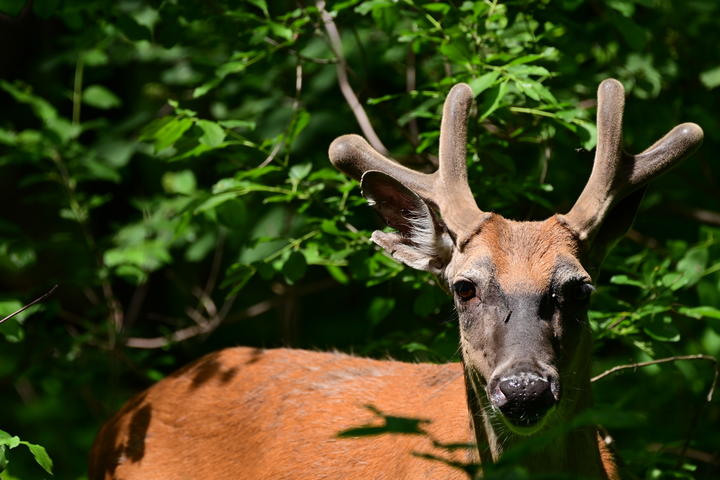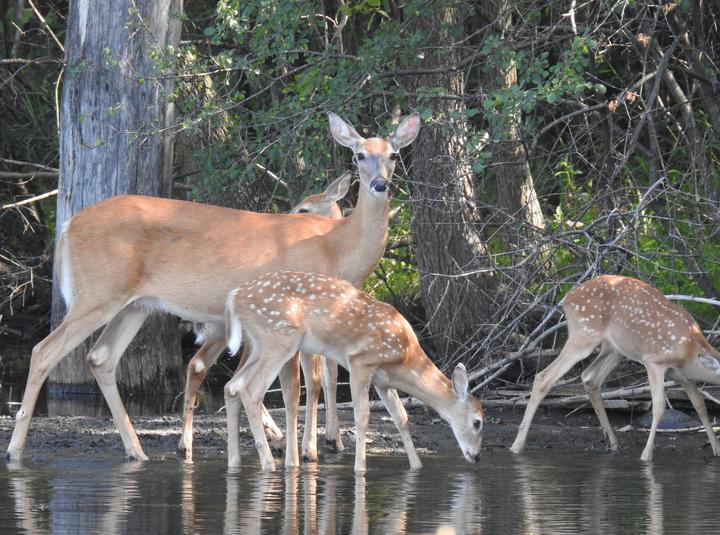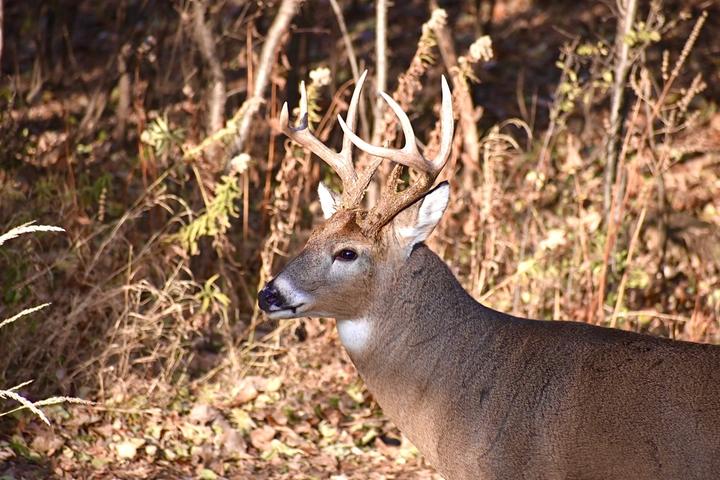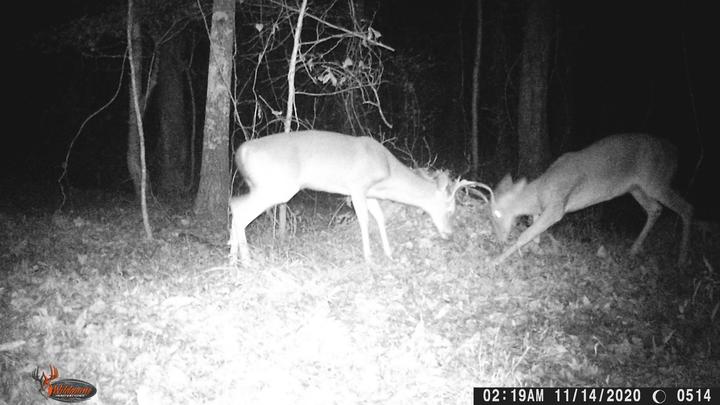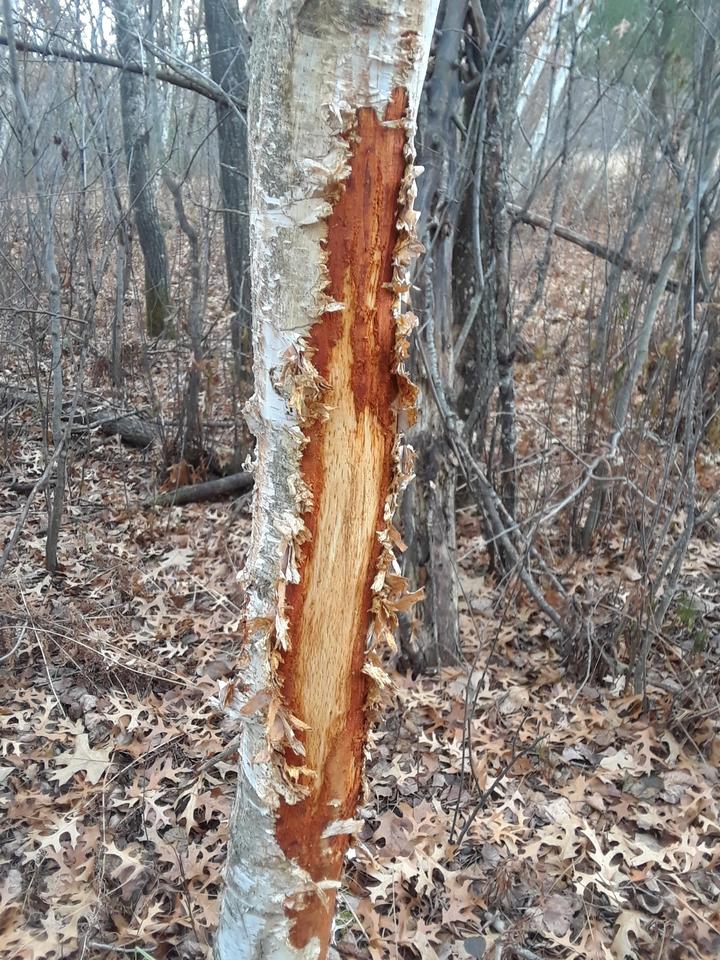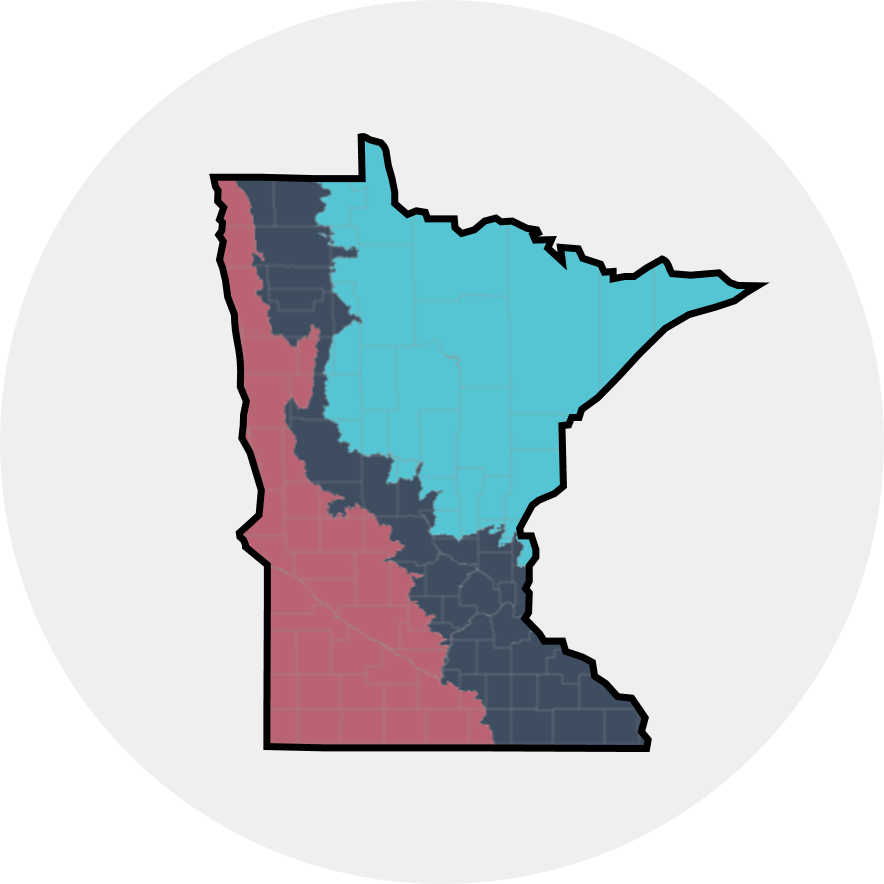More names for this animal
Anishinaabemowin: Waawaashkeshi
Dakota: Ṭaḣiŋça
The Dakota and Anishinaabe were among the earliest people to name Minnesota’s plants and animals, as well as to understand them in relation to Minnesota’s climate and seasons. Those original names are still in use, and several are included on the Season Watch website.
Latin (or scientific name): Odocoileus virginianus
The scientific community has a convention of assigning agreed-upon Latin names to every kind of organism. Using scientific names helps people communicate confidently about the same organism and organize lifeforms based on how closely related they are.
Page contents
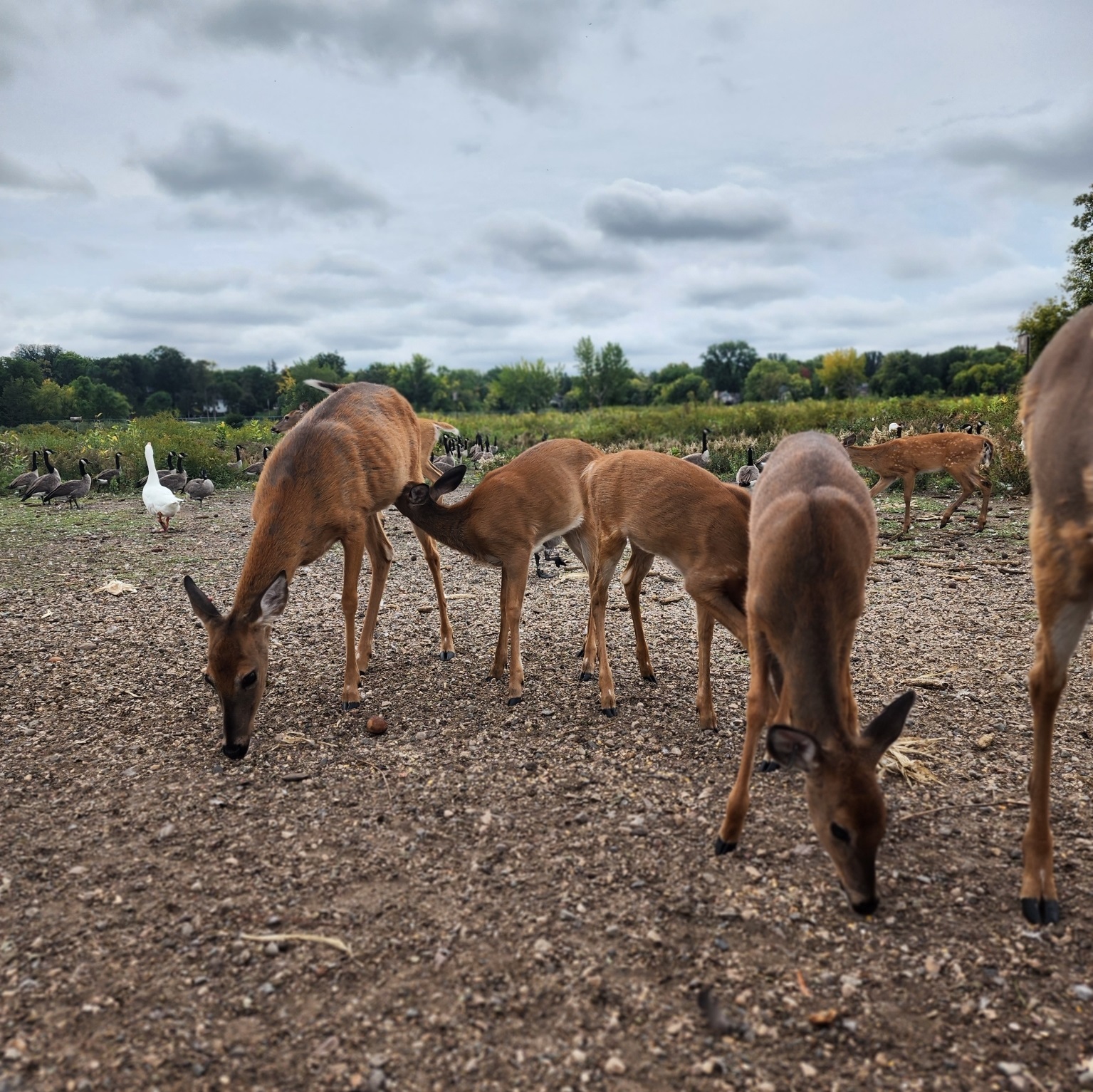
September 18, 2022, McLeod County, Minnesota
Photo © kbz3980, some rights reserved (CC-BY-NC)
iNaturalist observation
About white-tailed deer
- The white-tailed deer gets its name, of course, from its white tail. They are known to raise their tail when running or when alarmed as a warning to other deer.
- Male white-tailed deer have antlers which are used to battle other male deer for access to females during the mating season in the fall. Antlers are shed and regrown every year.
- Female deer gestate for about seven months. One to three fawns are born in late spring. They are born with white spots that provide camouflage. Fawns nurse for several months and may stay with the mother for up to two years.
- Fun fact: The white-tailed deer is one of Minnesota’s most recognizable species. In fact, legislation to designate the white-tailed deer as our state animal has been introduced at least eight times!
Visual guide to phenology
Watch for white-tailed deer presence (or absence), abundance, and behaviors at different times of year. Also, pay attention to when young-of-year appear and develop.
Note to observers
This page explains general clues to watch for when observing white-tailed deer phenology. However, this page does not explain how to identify this animal or collect data in a standardized way.
- For help with identification, see the Minnesota DNR's webpages on mammals.
- For guidance on collecting data, see Nature’s Notebook.
Graphs and historical data
Note: The Orientation Center provides a map, as well as information on reading graphs; interpreting summary statistics, who collected the data and how; and how to download datasets for independent exploration.
First young
- Earliest: May 18 (occurred in 2002)
- Average: June 5
- Latest: July 2 (occurred in 1990)
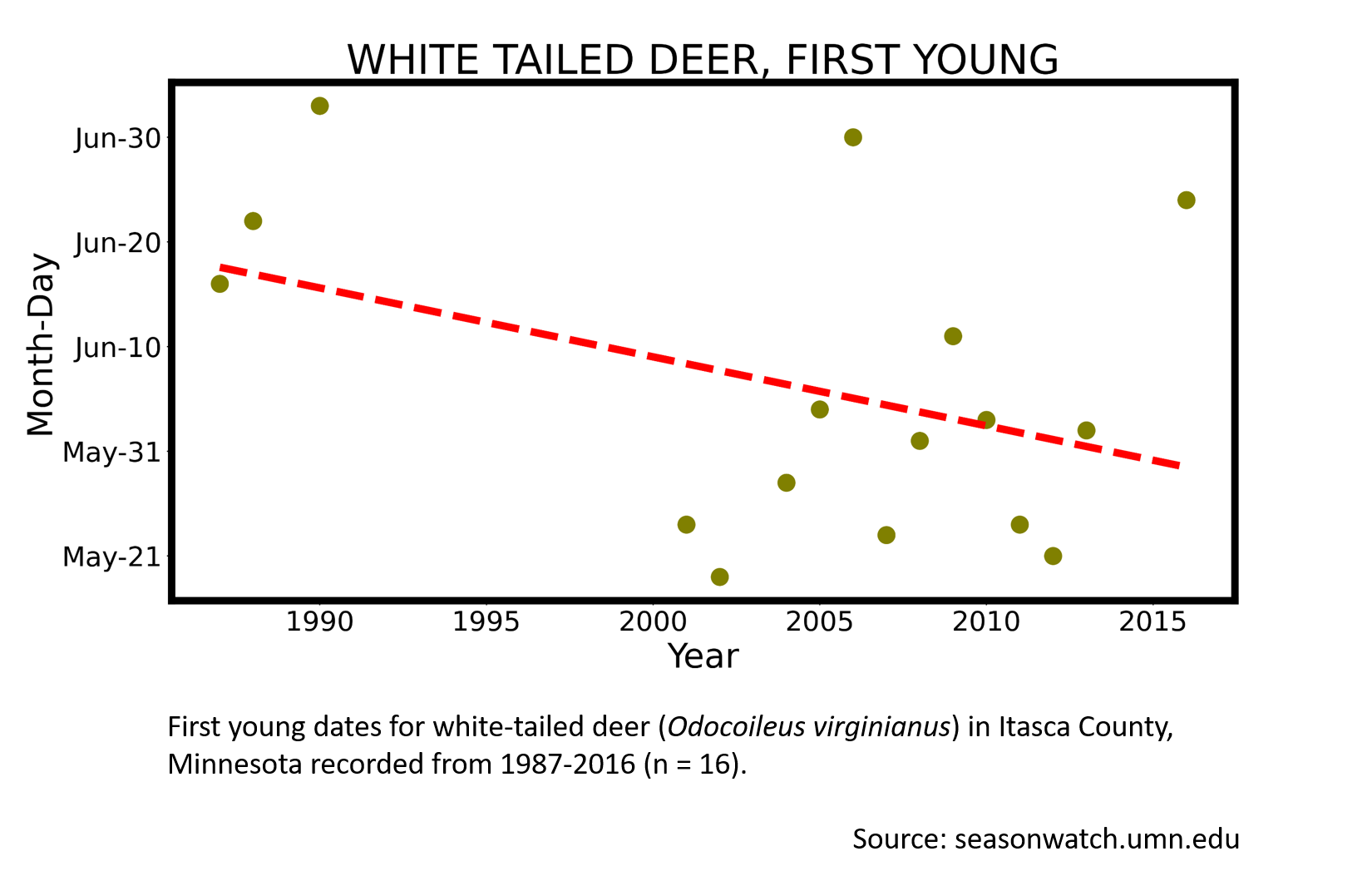
First antlers
- January 5 (occurred in 2014)
- May 24
- August 10 (occurred in 1994)
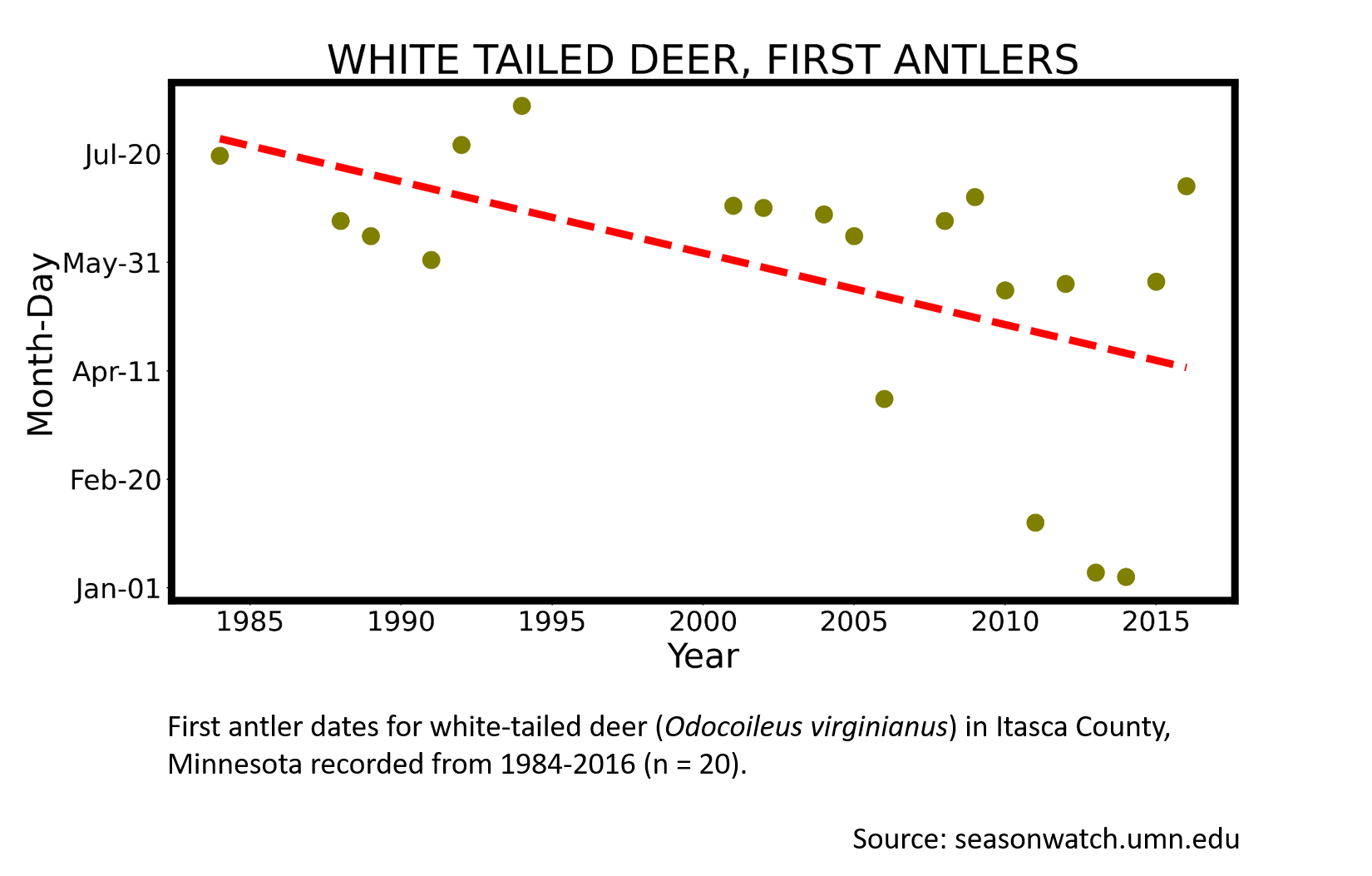
More resources
Keep exploring Season Watch
Keep exploring Season Watch
Co-author: Audrey Negro, Minnesota Master Naturalist
